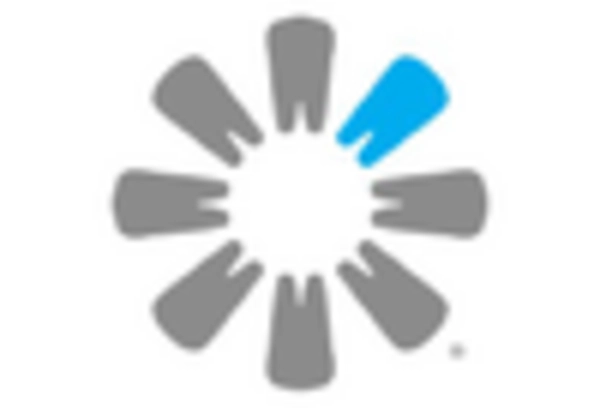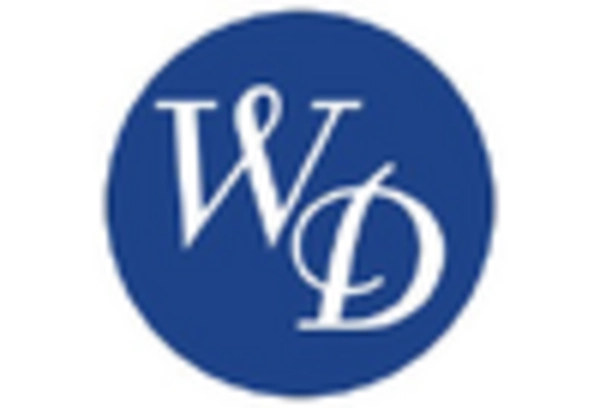Focus on Aesthetic Dentistry
The growing emphasis on aesthetic dentistry is reshaping the dental services market, as more individuals seek cosmetic enhancements to improve their smiles. Procedures such as teeth whitening, veneers, and orthodontics are gaining popularity, driven by social media influences and the desire for improved self-image. Recent surveys indicate that nearly 30% of adults are considering cosmetic dental procedures, reflecting a shift in consumer priorities towards aesthetics. This trend is likely to continue, as advancements in technology make these procedures more accessible and affordable. As the demand for aesthetic services rises, dental practices may increasingly incorporate these offerings into their service portfolios, thereby diversifying their revenue streams and enhancing their competitiveness within the dental services market.
Insurance Coverage Expansion
The expansion of dental insurance coverage is a critical driver for the dental services market. Recent legislative changes and employer initiatives have led to an increase in the number of individuals with dental insurance, which in turn encourages more frequent visits to dental professionals. Data indicates that approximately 50% of Americans have some form of dental insurance, which significantly reduces out-of-pocket expenses for patients. This financial support is likely to motivate individuals to seek preventive and elective dental services, thereby enhancing overall market growth. As insurance coverage continues to expand, it is expected that the dental services market will benefit from a larger, more engaged patient population, ultimately leading to increased revenue for dental practices.
Growing Awareness of Oral Health
There is a rising awareness of oral health among the population, which is driving demand within the dental services market. Educational campaigns and initiatives by health organizations have emphasized the importance of maintaining oral hygiene, leading to increased visits to dental professionals. Data suggests that nearly 75% of adults in the US recognize the link between oral health and overall health, which has resulted in a surge in preventive care services. This heightened awareness is likely to encourage individuals to seek regular check-ups and treatments, thereby expanding the patient base for dental practices. As more people prioritize their oral health, the dental services market will witness sustained growth, reflecting a shift towards proactive dental care.
Aging Population and Increased Dental Needs
The aging population in the US is significantly impacting the dental services market, as older adults typically require more dental care. With a growing demographic of individuals aged 65 and older, there is an increased prevalence of dental issues such as periodontal disease and tooth loss. According to projections, by 2030, approximately 20% of the US population will be over 65, which suggests a substantial rise in demand for dental services tailored to this age group. Additionally, older adults often seek restorative procedures, such as implants and dentures, further driving market growth. As the population ages, dental practices may need to adapt their services to meet the unique needs of this demographic, thereby influencing the overall landscape of the dental services market.
Technological Advancements in Dental Equipment
The dental services market is experiencing a notable transformation due to rapid technological advancements in dental equipment. Innovations such as digital imaging, laser dentistry, and 3D printing are enhancing diagnostic accuracy and treatment efficiency. For instance, the integration of CAD/CAM technology allows for the creation of precise dental restorations in a single visit, significantly improving patient satisfaction. According to recent data, the dental equipment market is projected to reach approximately $8 billion by 2026, indicating a robust growth trajectory. These advancements not only streamline operations but also reduce the time patients spend in the chair, thereby attracting more individuals to seek dental care. As technology continues to evolve, it is likely to play a pivotal role in shaping the future of the dental services market.

















Leave a Comment